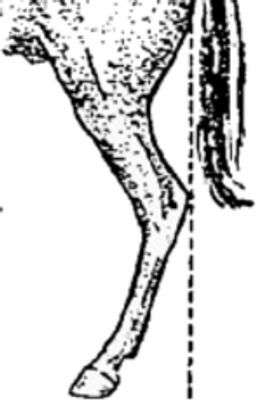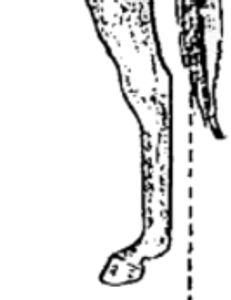Cranio Sacral Therapy
Horses are athletes that do what we ask while carrying us. They feel the extra pressure our handling puts on their heads, poles, jaws, sinuses, legs and backs. Like all athletes, bodies become out of balance and in response the horse's bodies will compensate. In this compensative state the horse's bodies are no longer in balance. Ultimately compensation patters will lead to the body breaking down, leaving a horse to operate despite the pain. Instead of leaving a horse to operate with decreased ability you can get to the root of the body compensation
Through light finger pressure on the skull and spine CST focuses on the many behavioral and performance issues stemming from head and jaw trauma, sore backs, locking stifles, and stiff legs.
Kristin works with each animal as an individual with a life history. She has the ability to see the body as a whole including their emotional, mental, and physical state. Through the session Kristin assesses what core imbalances are causing pain, movement and performance issues. Her goal is to provide relief, improve flexibility of movement and restore balance to the body promoting its natural ability to heal itself.
Pain stemming from ill-fitting tack, imbalanced riding, tie-downs, pull-backs, kicks, TMJ & dental issues cause horses to compensate.
Many conformational flaws called “U-Neck,” “Down-Hill,” “Sway-Backs,” “Over-the-knee,” and “Croup-high” are really imbalances from compensation. Not only can you help your horse feel less pain, you can help your horse correct these imbalances and become healthier, stronger, and happier! Help your horse become physically balanced and stronger so you both have more fun riding together.
Kristin believes in sharing knowledge . It's important to share information with people so that they can understand and see what their animals need. Kristin not only helps the animal but empowers the clients so they can help their own animal to the best of their abilities.
Help your horse perform with less pain. Sessions help bring lasting results including improved performance, movement, flexibility, health, behavior and is a huge reason why Kristin loves this work.
Scroll down to follow Sunny Boys journey to understand how much you can help your horse.
HEADSHAKERS & STRINGHALT PATIENTS: Yes! Kristin can help !
$250 for first assessment includes write-up
$140 for regular in-depth session includes write-up
Travel fees apply
Dental
Jerry Schmidt
When we go to the dentist they make sure our jaw accepts the new work done on our teeth. That is what the little film of black paper is for.
Equines need the same consideration only it's more difficult for them to let us know what feels okay. Most still eat even though sore and in pain.
Even with the best equine dentals, the horse's and pony's jaws are affected.
Help ease the soreness with Craniosacral Therapy.
Why make horses perform with headaches?
There is no need.


Additional Information
The area from the LS joint to the last rib is the Lumbar span. This area being long can also have a horse go toward a ventro gait and short to a dorsiflex gait. To long of functioning back can tend to be vento as well. But keep in mind length of back can be compensated by length of pelvis.
A croup set higher than the wither can also cause a horse to be more ventro in gait. A high croup adds more weight to the front quarters making it harder for a horse to come off the ground in front and increasing concussion to the front hoofs. This can make for an uncomfortable ride.
Learn More
Follow Sunny Boys journey to understand how much you can help your horse.
HEADSHAKERS & STRINGHALT PATIENTS: Yes! Kristin can help !

"My horse, Shaggy, was having such issues with his back and pretty much everything else that I was beginning to feel his quality of life was not good enough to stick around for. He walked crooked, looked crooked, and was not allowed to "have fun" for fear he would make it worse. Today, thanks to the CranioSacral work Kristin initiated and her work with PT Reap, his back looks normal, he plants his back feet nice and straight, he can get out and run without being crippled the next day, and I'm envisioning riding him again one of these days. THANK YOU!!!!!!!!!!!!!!!! "
Nancy Wahl-Scheurich, CA

SHAGGY'S JOURNEY
Kristin has been ECS practitioner since 2011. Helping horses and educating owners of their equine's needs is her passion.. This page shows the changes and progress for more biomechanically sound horses obtained by using the Equine CranioSacral techniques.
In 2010 Kristin was desperately looking for help for Shaggy who was diagnosed a neurological case and even when pumped up with Adaquan and Legend shots couldn't hold weight on all four legs.
Equine CranioSacral was the start of true recovery for Shaggy. Slowly, he was able to put weight on his hind quarters. Below you can see the difference in stance of Shaggy's posture while walking. On the left he looks about ready to fall, on the right, although weak he is able to biomechanically walk straighter.

First session. Before above, after below.
By the end of treatments Shaggy didn't need to use his tail nearly as much to counter balance for his legs. He was able to walk straighter instead of crookedly trying to walk a straight line with each half of his body facing different directions.
NO drugs were used. NO chiropractic
Note: All treatments have their place. The point here is CranioSacral undeniably allows the body to heal and regain biomechanical balance.

Photo courtesy of Lumi Michelle Rolley in ECS2. You can see tension relief on the after photo. Look for the softness in his eyes. We have provided detail such as the yellow line for easier comparisons.
Notice Shaggy's eyes in the before picture. His left eye is drooping compared to his right. In the after picture notice how much more level and open they are!

At first Shaggy is not able to bear weight on his hind end. By the middle picture he is starting to steady himself on the hindquarters and in the last picture he is bearing weigh on all four legs much more evenly! This means he is less lower back pain and can function. Also look at the difference with which he holds his neck. In the first he holds a ton of tension, by the third his neck is looking much less tense and he is starting to build topline! This posture is due to the diligence of Horse Sense students and Kristin relaxing the muscles through message and through CranioSacral techniques. Shaggy is a live case proving that not is all lost and even a 20 year old horse can regain the ability to walk straight after diagnosed neurologically incapable.
Above Shaggy has made some spectacular changes!
Photo courtesy of Lumi Michelle Rolley.
Cow hocked has been taken to the extremes in some of the gaited breeds.
A horse that is cow hocked puts more stress on the inside of the hock and the stifle.
This is due to the stifle being pushed out, away from the side of the horse.
A true cow hocked horse will also toe out and not be an efficient stopper and can be a rather sloppy mover behind


Also in evaluation, take into consideration the hind limbs: are they straight or more angular
Being too straight can cause:
- A stressed horse to become a stifled horse.
- Being too straight such as a post legged horse can also make for a rougher gait.
Then there is sickle-hocked, which can put strain on the back of the hocks. It is not uncommon to see sickle hocks in some of our gaited breeds. The reason being to help a horse to get under it's self. A little bit of sickle hocks may be fine but I see it having (in some cases) gone far beyond the expectable limits for prolonged sound function.

Being too straight can cause:
- A stressed horse to become a stifled horse.
- Being too straight such as a post legged horse can also make for a rougher gait

Site Content
For more information on how Cranio Sacral will change your horse's life for the better, please conta

evaluation
When evaluating a horses’ hindquarters we must first understand the importance of its function to the horses body. The hindquarters are “the power source” for forward and upward movement. This power source is used to distribute the weight off the front quarters when the horse is in motion. Just as with the front quarters, the hindquarters must be evaluated for the strong and weak points in the structure. This is important to be able understand how to correctly engage the hindquarters for maximum efficiency of gaits without undue stress. This stress can come from:
- Asking an individual to do more with their hindquarters than their structure will allow.
- Not asking a horse to use itself enough (or correctly) to maintain proper balance.
- Asking a horse to use itself incorrectly for it's specific structure.
This power source of the hindquarters is transferred through the very important lumbosacral joint (where the loins meet the hip). This is the uppermost joint of the horses’ hind limbs.
If this joint is too far behind the point of the hip can cause a horse to go more toward a Ventoflexed (hollow) gait. When this joint is closer to aligned over the point of hip this lends the horse more to a Dorsiflextion (raised back). The most Ventro gait being the pace, less the stepped pace, Sobreandondo, rack, corto/ largo. Level, the running walk, slight Dorsiflextion towards a fox trot and the trot being the most dorsiflextion.
Copyright © 2025 Horse Sense Education and Advocacy - All Rights Reserved.
